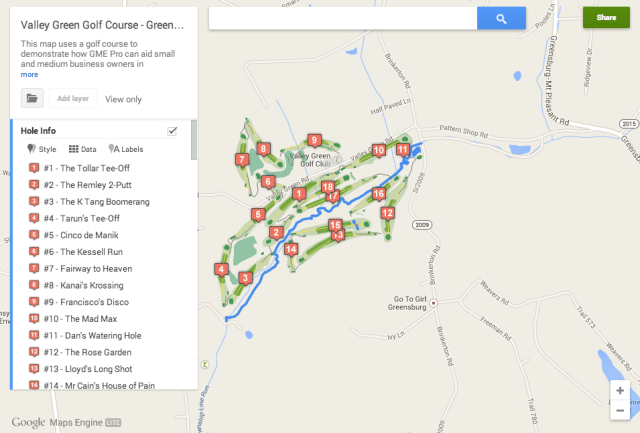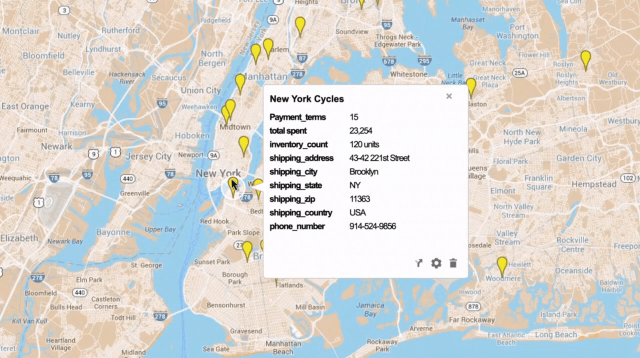Many small business owners know that they should be blogging and creating content for their website, but they become frustrated when the traffic and sales don't follow immediately behind. In order for a business blog to help convert visitors into leads and sales it needs to be seen. To help increase your business blog traffic use these five simple tips.
1. Promote on social networks that cater to your target audience
After you publish a great blog post on your blog what do you do next? Your first step should be sharing it on social media. It is impossible to be effective on every social media network, so focus on the networks that your target market is active on.
Want to quickly identify the social media networks that drive the most visitors back to your blog? Dive into your Google Analytics account and see where the most social referral traffic comes from. Focus on the sites responsible for the most referral traffic and weed out the social networks that just aren't producing traffic. When you share your content on social media ask your audience to share it if they enjoy reading it. This is a very simple way to expand your social reach and introduce your company to a whole new audience.
2. Improve your website speed and mobile optimization
If your blog posts don't load right away your visitors are going to leave and find a source of content that loads immediately. A slow loading websites will essentially push your visitors to your competitors -- consumers demand fast websites, so take the steps required to increase your load time by utilizing the speed test resources below.
There is a good chance that the majority of your blog visitors are arriving via mobile devices. This makes it very important that your website provides a pleasant mobile experience. If a visitor has to zoom in and out as well as manipulate the screen position in order to interact with your content they aren't going to return or share it via social media. Google's mobile search results now feature a "Mobile-friendly" notation next to the websites that they deem provide a good mobile viewing experience.
Here are some resources to help you check your website speed and mobile friendliness:
3. Link out to relevant websites you want to build relationships with
Building relationships with other websites and bloggers within your industry is a great way to get more exposure as well as referral traffic. Interlinking your own blog posts benefits your SEO and keeps your visitors on your website longer, but you need to link out to other websites as well.
Linking out to other high quality and relevant websites shows Google that your content is on par with the resources you are linking to and it also helps to build relationships with those sites. A good rule of thumb: link out to websites that you want to build a relationship with and provide value to your readers. This can result in future earned links as well as guest posting opportunities.
4. Develop an intelligent keyword strategy
If you are serious about driving traffic to your blog then you need to create a keyword strategy designed to pull in organic search traffic. Targeting long tail search phrases in your blog posts is a great way to increase organic traffic to your blog. Generally speaking, long tail search phrases are easier to rank in the organic results due to lower competition.
So, how do you identify potential long tail keywords and search phrases to create your blog content around? You can start your brainstorming by entering in some keywords and terms into Google's search bar and seeing what auto-complete suggestions appear. Write down some of the results and enter them into the search bar -- then take note of the related searches. Repeat this process and create a list of potential terms to research via Google's Keyword Planner. This will give you an idea of the monthly search volume for each.
Don't be turned off by keywords with low search volume. If you are publishing a lot of blog content you can target a lot of terms, which all add up to a large combined monthly search volume.
5. Create content that provides value
Creating content involves more than just cranking out blog posts. You need to think about what your target audience wants to read and what they will consider to be useful. If they enjoy reading your blog content they are going to return to your website in the future and they are going to share your content across their social media profiles.
A lot of businesses will publish blog content that rivals advertisements. Give you helpful free information on your blog and your audience will appreciate it. This helps to build a relationship based on trust. Consumers are going to return to blogs that aren't constantly jamming offers down their throat. Focus on providing value and the leads and sales will follow naturally.
Article originally appeared here on February 5, 2015, by Jonathan Long.
Showing posts with label small business. Show all posts
Showing posts with label small business. Show all posts
Friday, February 13, 2015
Tuesday, October 22, 2013
Google’s Maps Engine Pro Aims To Help Small Businesses
Google’s Maps Engine Pro Aims To Help Small Businesses Visualize Location Data As Easily As They Make A Pie Chart
Posted by Matthew Panzarino
Today, at Google’s San Francisco offices, Google introduced Maps Engine Pro, a utility that allows small businesses to use Google’s location tools to create maps out of location databases.
There will also be a mobile app available for Android initially to allow users to edit and create these maps on the fly. The app, called Google Maps Engine, will allow access to any level of GME service.
Brian McClendon, VP of Google Maps, noted that there are still 1 billion monthly users of Google Maps but also over 1 million active sites and apps using the APIs.
McClendon says that Google is also after semantic data, including local location, imagery, Street View and base maps. Each of those layers must be collected separately and sometimes includes mistakes. Google has spent a lot of time creating what it calls a ‘canonical base map of the world.’ This map allows it to answer questions like ‘how do I get there?’
But on top of all of those data layers is something Google is calling the Knowledge Layer, which contributes to people’s ability to get questions with more complex parameters answered.
All of these layers service consumers and the enterprise on either end of the scale. Now, to service those in the middle, like small businesses, Google is introducing Maps Engine Pro. It’s a tool that allows businesses to create internal- and external-facing maps that utilize its data layers to make business decisions.
Among the decision-making tools will be the ability to optimize the locations of your people and company assets, engage your users and build apps that take advantage of all of Google’s layers.
Google’s Vinay Goel, Google Product Manager on Google Maps, detailed how professionals could use some of these tools to solve problems.
One example Goel gave is that an insurance underwriter should have easy access to your location and the canonical data surrounding the risk profile of your neighborhood in order to calculate your plan and premium.
The pricing of Maps Engine Pro is $5 per user per month or $50 per user per year depending on the license usages.
Here’s an example of a map that you might see created in Maps Engine Pro:
Heather Folsom, Product Manager of Google Maps Engine Pro, spoke about the capabilities of the new service. Basically, you’re able to upload a spreadsheet of data that you might have with locations or other mappable data and see it instantly visualized. You can then sort or filter it and use it to craft strategies.
Pure Fix Cycles has been one of the testers for the program and a video shown to press at the event noted that MEP was used to visualize where the customer service calls were coming from on the East Coast. This allowed them to see where the best locations might be to send those callers to get service, which stores had the most inventory of the parts that were needed to fulfill those orders and more.
A demo was also given of placing a downloadable database of publicly available San Francisco planning department data on a map. Once imported, it could be easily filtered by any of the criteria in the data columns in a ‘Google Docs’-style spreadsheet. Editing this spreadsheet in ‘live’ fashion results in the points changing on the map.
Though this might appear, at first glance, to be Google tooling its Maps Engine product down a bit, it’s actually more about boosting the consumer maps offerings to be more useful to small businesses or pros.
The consumer tools that allow users to build custom apps are all well and good, but entering data that an SMB might have in its databases is tedious and doesn’t have the flexibility needed to create custom reporting tools and analysis. And on the other end of the range, the full-blown Google Maps Engine product requires some fairly serious geographic information systems chops to craft useful tools for internal use.
Google Maps Engine Pro is about making those tools more friendly and accessible, letting small business owners and other ‘professionals’ visualize their mapping data, rather than trying to do so internally from a spreadsheet list of locations. The key is being able to easily import and filter that data by a variety of factors. Just going by the demos that we saw, this appears to be fairly quick and easy.
It should be an interesting additional layer of data that helps businesses make decisions based on location data. Just a couple of years ago this type of tool might have to be manually crafted by a developer or contractor, or cobbled together out of open-source mapping data and tools.
Goel says that Google hopes that GME Pro will sit alongside documents, spreadsheets and storage that businesses will use daily to make decisions and get things done.
You’ll be able to find out more about the new Maps Engine Pro tool at Google’s Enterprise mapping site today.
Subscribe to:
Posts (Atom)





